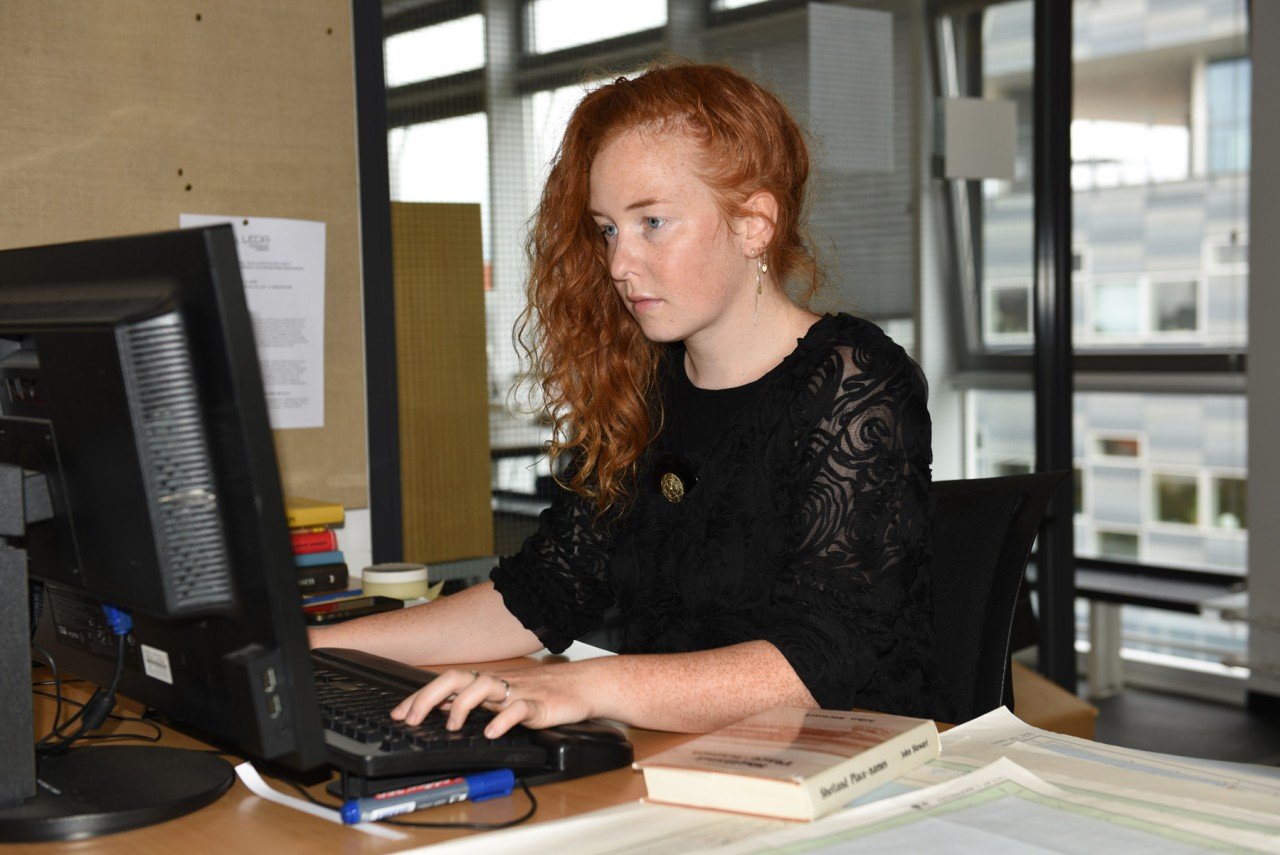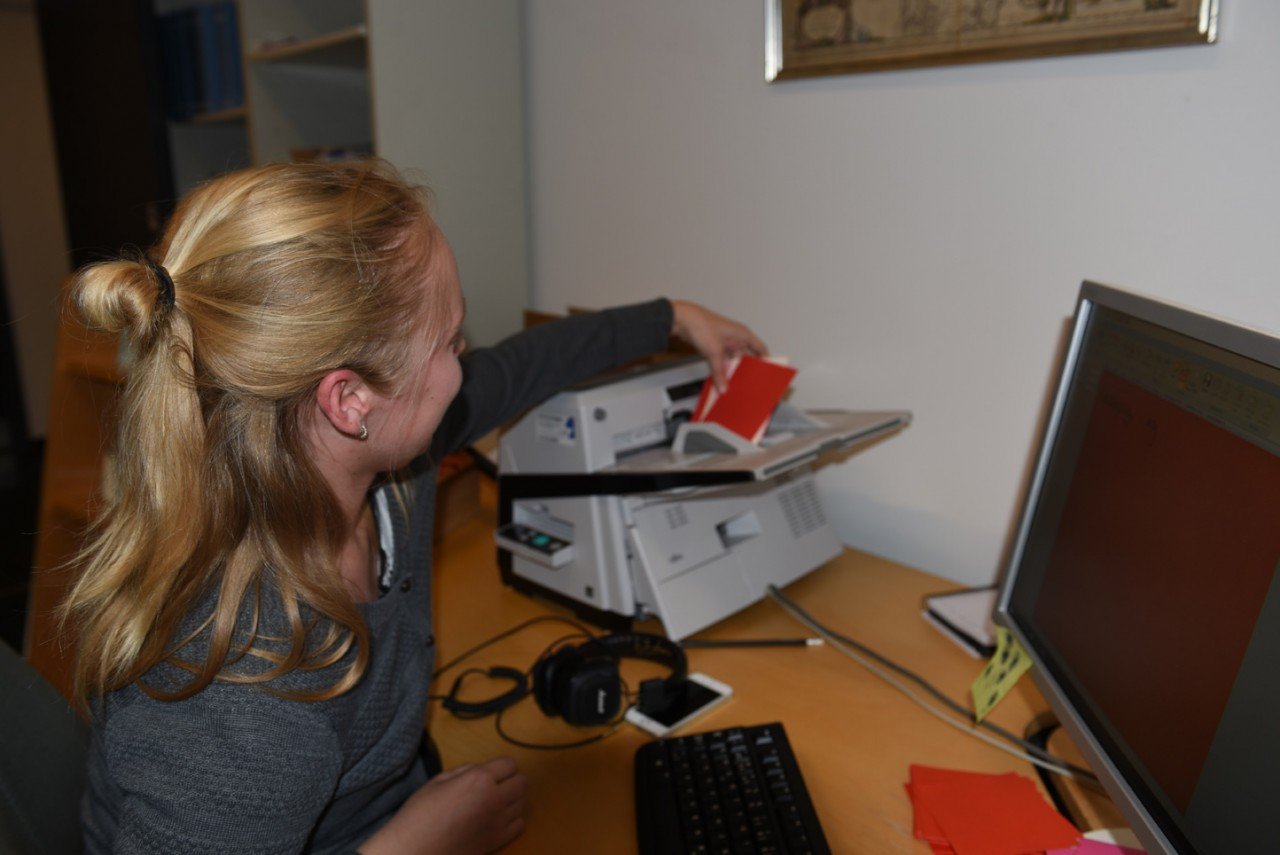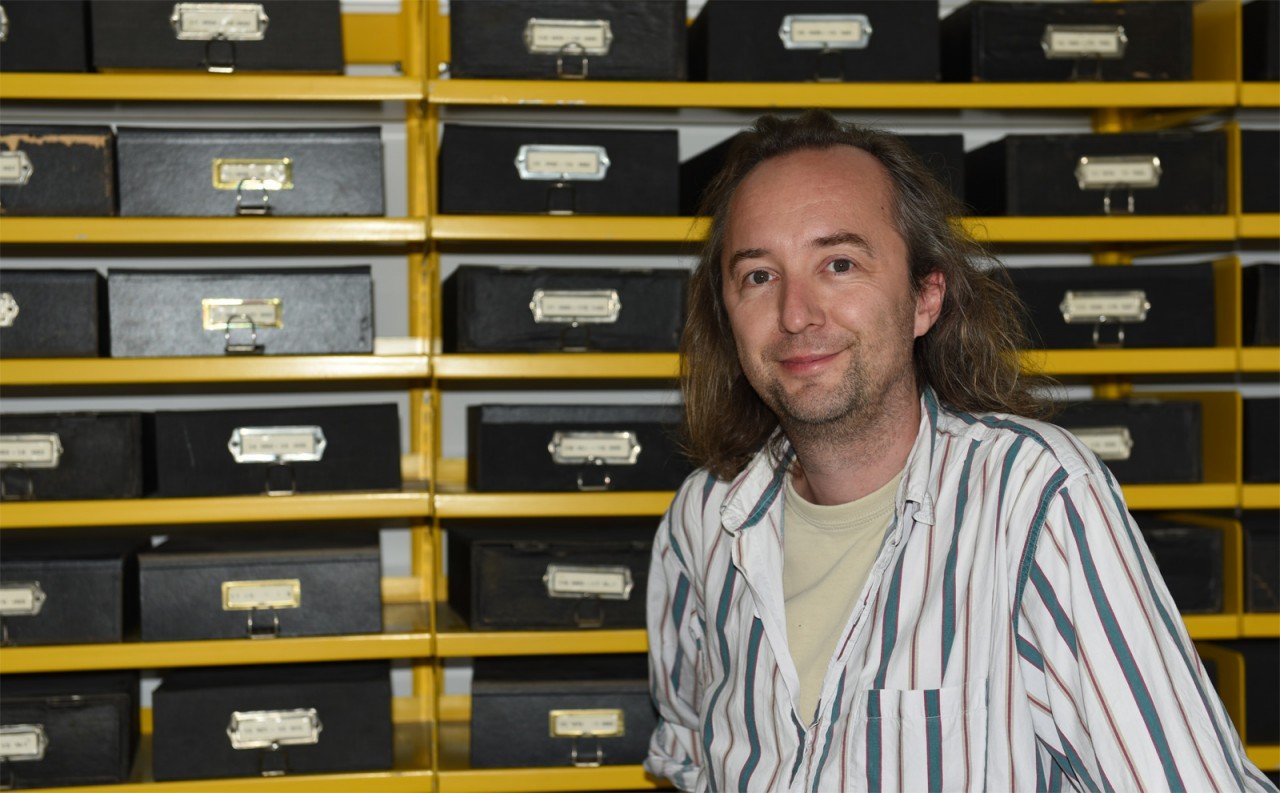Universitetsavisen
Nørregade 10
1165 København K
Tlf: 35 32 28 98 (mon-thurs)
E-mail: uni-avis@adm.ku.dk
—
Science
Severe funding cuts threatened to decimate the staff at the Department of Nordic Studies and Linguistics, University of Copenhagen. Until someone had a crazy idea.
This is a nice view. And the just-merged Department of Nordic Studies and Linguistics (NorS), University of Copenhagen (UCPH) will say goodbye to it sometime next year.
We are on the fourth floor of Building 27 on South Campus, on the corner of Njalsgade and Amagerfælledvej. The department – and not least its extensive collections – take up the 2nd, 3rd, 4th and 5th floor. The room is stocked with shelves and filing cabinets. But this will soon end.
In offices along the corridors, student assistants are scanning away as if their life depended on it. Almost everything is to be digitized and
We quickly agreed that you would rather sit closer to your colleague than not have a colleague
Katrín Þórdís Driscoll, Department of Nordic Studies and Linguistics
They are ahead of schedule, says Katrín Þórdís Driscoll, who heads the digitization project.
“It turns out we have some really skilled student assistants. From January to September we scanned what we expected we would spend a whole year on. So now we have expanded the project, and can reach more of the dialect research collections”
The remarkable thing about the digitization is not just the speed with which it is taking place. It is also the story behind why it is taking place at all. As the story really started with a severe budget cut that threatened to decimate the department’s staff. Until someone got an idea.
The cut was announced on 15 September last year to a large meeting on South Campus. A consultancy report had charted out how the Faculty of Humanities could save DKK 75 million – on top of the DKK 55m that had already been taken as a consequence of government cuts to university funding.
At the meeting, the staff at the Nordic Research Institute (NFI) and the Institute of Nordic Studies (INSS) were told that they were to merge, and that the NFI segment would have to find DKK 9 million in savings, equivalent to 40 per cent of its budget.
“We quickly agreed that you would rather sit closer to your colleague than not have a colleague. So someone suggested digitizing the collections so that we could reduce our total space,” says Katrín Þórdís Driscoll.
The rescue plan was as follows: 1) Quickly digitize the department’s collections, 2) store all the 6 million pieces of cultural heritage in the basement, 3) Move all the staff together to the 2nd and 3rd floor, 4) rent out the surplus space.
The digitization would cost money, but the former director Jytte Sander French estimated that since the hardest cuts were scheduled for 2019, and since several employees had accepted voluntary severance plans during the 2016 round of layoffs at UCPH, there was money for the project.
Associate professor Peder Gammeltoft was given overall responsibility, and Katrín Þórdís Driscoll – a master’s graduate in history and a
“The digitization had been an aspiration for the Department for 10-15 years, but we had never really had time for it,” says Katrín Þórdís Driscoll.
The cuts, paradoxically, now yielded the missing resources.
A bulletin board hangs in a large office on the fourth floor with pictures of the students working on the digitization project.
One of them, Caroline Boolsen from linguistics, sits two metres away and focusses on a computer screen. For her, the project has been a golden opportunity to work with, and not just reading about her field.
“Some of the scanning is routine, but you always have to think, and use your academic skills to ensure a good result. And it’s certainly good for me to work with things I’ve only heard about in the classroom,” she says.
The computer screen in front of Caroline Boolsen shows a map of the Shetland Islands with dots marking scanned and entered data on different place names. She is currently in the middle of a project-oriented process on Shetland place names, an idea she got during the digitization.
“Several independent projects have sprung out of digitization,” says Katrín Þórdís Driscoll. “We have one who started up as an intern and who now has short project appointment to look at Greenlandic place names. And we have another student assistant who was interested in manuscripts and who is currently working on communicating medieval manuscripts online.”
At the department, they regard the students as research colleagues, she says:
“We hope they see it like this: That they as part of their education are allowed to see what is the basis for research and how a research community works – and be a part of it.”
It was almost too good to be true: That slashing a department’s budget could also lead to UCPH moving ahead on the digitization of cultural heritage, thereby amassing large amounts of data in one place so researchers, students and anyone else can easily investigate local place names or family names. And students at the same time would get important business and research experience and launch new research projects.
There is also a catch. At least if you by ‘digitizing’ mean a complete online archive from the outset, where you can easily search across the collections.
We hope that money will be forthcoming to continue the project and make it more useful. This is what we want. But the finance situation of the Faculty of Humanities is as it is.
Katrín Þórdís Driscoll
“We have imitated the search process in the physical collections, where you have to do a lot of scrolling. So that’s what you have to do in the database from the start,” says Katrín Þórdís Driscoll.
The chronological collection of place names is searchable by year for example. You can search for sources from, say, 1445, but if you want to find out something about Roskilde in that year, you have to browse, also online.
“But as soon as the database exists, you can change and add information. This can be done ad hoc. But you can also hope that there is money to hire people to enter more information,” says Katrín Þórdís Driscoll.
There is still alot of work left, in other words, in entering metadata to make the collections easily searchable. And Katrín Þórdís Driscoll cannot say how long this will take.
“It depends on how much money there is. We have already taken on more work than we have on our budget. We hope that money will be forthcoming to continue the project and make it more useful. This is what we want. But the finance situation of the Faculty of Humanities is as it is,” she says.
She herself is hired for this specific project until the turn of the year, when the collections will be become available online. But she hopes to be able to stay on if there is funding to continue the project.
The department reckons on vacating the 4th and 5th floors of building 27 around September 2018. It is not yet known who will rent the premises.


